CENTER FOR
TRANSFORMATIONAL LEADERSHIP
IN CRISIS ENVIRONMENTS

CTLCE
OUR FOUNDER'S EARLY LIFE INFLUENCES
Cameron was born in Manhattan, New York and is of Scottish heritage on both sides of her family. She was raised by her grandparents with the values they considered as critical for a strong foundation -- the respect and dignity of all beings, honesty, responsibility, building and maintaining meaningful relationships, a strong work ethic, and service to family and the community. Of equal attention was a passionate commitment to the values of America and democracy -- aspirations of our nation's Founders to create an enlightened society where decision-making reflects a frame-work of equality, justice, responsibility, peace, and promoting the well-being and prosperity of society.


Cameron's grandfather -- a gentle and soft-spoken individual -- was, by his trade, a highly skilled carpenter earlier in his life. By the time Cameron was born he had become specialized as a master cabinet-maker. His traditional craftsmanship with wood was at the level of an art. He carefully hand-selected each piece of timber for any specfic commissioned work -- choosing only the best or most unique in this selection process. Employing old world expertise and the meticulousness of traditional joinery techniques that were free of both nails and screws, his handfinishing techniques likewise were focused on exquisite attention to detail and aesthetics. Some of Cameron's most tender and meaningful memories growing up were working side-by-side with him in his workshop -- sharing a mutual appreciation for not only every step of these creation journeys to fulfill the requests of his clients, but also deeply experiencing this quality time alone together.

This love of the varying natural qualities that each specific tree offers as a special gift later matured into Cameron's continued appreciation of fine wood, fine design, and fine sailing characteristics of two classic wood sailing boats that she purchased, restored, and passionately sailed in her adult life.
The skill-sets of Cameron's grandmother were those as a seamstress and tailor sewing customized clothes, primarily in various weights of wool. Throughout the year her grandmother was also called upon to crochet infant and baby sweaters, hats, booties, and blankets which her clients delighted in giving as special gifts. Additionally, she had an established and always growing array of on-going commissions requesting customized traditional knitwear ranging from mittens, scarves, classic cardigan and pull-over sweaters, and always of high demand -- traditional cable-knit Scottish fisherman's sweaters.
Valuing a good education as an important start to "good citizenship," her grandmother also was Cameron's first academic teacher -- methodically teaching Cameron how to read before school age by use of a large print Bible and a large print edition of Ralph Waldo Emerson's Essays. Her grandmother's simple and convincing perspective was: "You can learn how to read at the same time you learn good values." Her approach met those goals, and also gave Cameron an early start in school and a strong affinity for the value of reading, moral and ethical reflection, and writing.
The only person you are destined to become is the person you
decide to be.
Ralph Waldo Emerson
Cameron's grandmother was an Elder in a Baptist church, and therefore spiritual life was a central core of family life. These values re-enforced each congregation member's responsibilities to others and the value of our Americans freedoms. Each religious Sunday service generally also included at least one patriotic song such as "America the Beautiful," and on special occasions (such as near July 4th or Veteran's Day) even the "Star-Spangled Banner." Spiritual classes and meetings consistently began with a personalized prayer for any congregation members who were ill or facing hardships, as well as others in national and world news who were most impacted by injustice, famine, draught, war, plague, or other disaster.
God
and
Country
Prior to beginning any spiritual class or meeting, congregation members also engaged in the Pledge of Allegiance to our flag as a personal and collective commitment to the freedoms, rights, and responsibilities of American citizenship. The pastors and congregation very much believed in the importance of maintaining the separation of Church and State in our personal lives, however, the values of democracy, spirituality, and walking-the-talk to be of service in the world were considered the outward expression of our Commitment to American democracy. To put their principles into useful action, church family members of all ages frequently worked together to organize and engage in tasks that were in direct response -- and of practical assistance -- to national or international regions or to specific families or individuals.
At age 12, Cameron approached her grandparents to inquire if she could receive their permission to explore the principles and practices of other Christian religious denominations to gain a broader perspective. Her grandparents approved her request, and she studied the Catholic catechism teachings in a year-long program. At that conclusion she chose to be baptized in the Catholic faith in a nun's chapel by a priest from Scotland who also served as her mentor and spiritual friend. Cameron participated in Mass every morning before school; and on Sundays, after the celebration of Mass and a message from the priest, she worked with congregation members as they collectively engaged in projects designed for others in both the local community and for those in need overseas. Over the next five years she explored the perspectives of the monastic founders of several Catholic religious communities through frequent periodic spiritual retreats. She discovered she had a natural inclination for the principles of Saint Francis of Assisi and Saint Clare of Assisi -- simple living, humility, a positive vision of the world, detachment from material possessions, social justice, and respect for nature and all beings. Therefore, Cameron's investment of available personal time gravitated toward engagement with Franciscans in both retreat spiritual programs and with their direct service in the larger world.

Throughout her teen years (and throughout her life) Cameron has felt a strong calling to serve as a priest. In fact, her desire was to serve as a Chaplain within the Navy. However, the Catholic church was not ordaining women as priests. With women's rights becoming a viable possibility it was anticipated by many women across the globe (especially in America) that Pope John XXIII and his modern approaches had a strong chance of leading major changes through the 3-year meeting of the Second Vatican Council (known as Vatican II). The topic of this Council was "The Church in the Modern World." Although women's rights and women as priests were topics of major discussion during this conference, the conclusion (based entirely on male religious input) was that women were still entirely excluded from such service within the church and in the larger world.
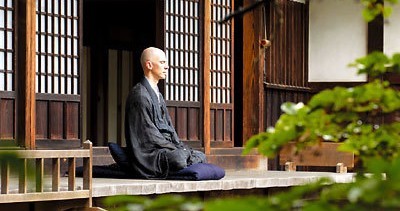
By the time Cameron was ready for university education, she encountered Zen Buddhism as it made its entry into New York City from Japan through visiting Zen Masters. This was the true and deep practice offered by legitimate recognized Zen Masters; and Cameron experienced an immediate and profound connection with the practices during Zen Sesshins ("intensive" practices). These practices gave her a feeling of "coming home," and she intuitively realized this path was the one that would serve as her framework of principles and practices for the duration of her own life.
The ease with which this took place was also facilitated by Cameron's prior extensive reading in Western philosophy from Aristotle (with efforts to shape civilizations in positive ways based on evidence-based outcomes) to Marcus Aurelius (integrating both leadership and spirituality and major social reforms for the disenfranchised). Additionally, the Meditations of Marcus Aurelius published after his death emphasized reason coupled with the responsibilities that are inherent with power and the wisdom of self-restraint.
Cameron's study and readings at that time also included published translations of the diaries and letters of mystic Catholic monks, nuns, saints, and religious scholars whose works spanned over many centuries and were incluisve of the modern era. Likewise, she immersed herself in the study of Eastern philsophy and Eastern spiritual practices of Asia offered by Lao Tzu and Taoism, Confucius, Shakyamuni Buddha, the 14th Dalai Lama (spiritual leader of Tibet), the psychological studies of human nature and the human condition offered through Theravadan Buddhist Abhidhamma studies, and Zen studies as authored by Philip Kapleau Roshi (a Western Zen Master) and Daisetsu Teitaro Suzuki (Zen Buddhist scholar, translator, global lecturer, and Japanese university professor).
Cameron also explored the writings of the respected contemporary Catholic Trappist monk, Thomas Merton, who frequently wrote of his study and practice of Zen Buddhism -- as well as his facilitation of inter-religious dialogue and projects that recognized, honored, and integrated East and West spirituality into practical daily life and ethics.
In accounts shared by these and other revered deep spiritual religious thinkers and scholars from diverse spiritual backgrounds -- each of whom had reputations as very serious spiritual practitioners -- Cameron was mindful that their recorded encounters and influences often referenced Zen Buddhism in their journals, correspondence, and publications. Additionally, such notables as Dag Hammerskjold, second Attorney-General of the United Nations, shared his vision of the world based on fundamental agreements of member nations to core practices that embody ethical boundaries in both war and peace. For those who are familiar with Zen principles, Zen's influence on Attorney-General Hammerskjold was unmistakable. Mr. Hammerskjold clearly had a deep understanding of the history of humankind that all too often has been sparked by religious differences; therefore, he introduced secular values that all major religions share as their core into the U.N. objectives for which he encouraged support. Furthermore, he proposed secular moral leadership boundaries based on fundamental agreements by U.N. members of what are recognized throughout human history as wholesome behaviors verus unwholesome behaviors. In this way he led efforts that established clear standards of conduct that reflected a respect for human rights and have proven to be beneficial for not only the safety and wellbeing of citizens but also as essential for the progress as civilizations. Some called Dag Hammerskjold "the consciousness of the U.N." and others called him the "Zen Master of the West." His own personal spiritual struggles, sacrifices, and spiritual journey were published posthumously under the title of Markings; and after his death, his immense contributions to the world-society were recognized in awarding him the Nobel Peace Prize.

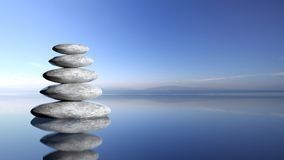
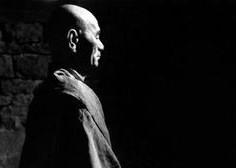
Collectively -- spanning across diverse backgrounds -- these highly credible, esteemed, and thoughtful sources clearly recognized the high degree of relevance of Zen practices as they apply during any period in history. Therefore, Cameron gained keen awareness and confidence that the opportunity presented by these visiting Japanese Zen Masters to Manhattan was not only auspicious for her own development but likewise provided credible and appropriate guidance to others inclined to engage directly in serious Zen practice. As a consequence, at age 18, Cameron committed to the authentic Zen Buddhist path where, over the years, her practice has matured to produce a considerably quiet mind amidst a very disruptive and troubled world.
During this same historical time-period in the United States, a distorted maladaption of Zen emerged within the hippie and counter-culture movement in which various concepts were loosely (and generally incorrectly) interpreted and exploited for their own purposes -- including justifications for communes of "free love" as well as the illicit drug use of heroin and hallucinogenics such as LSD. It isimportant in understanding Zen to recognize that these were perversions of what these individuals chose to call Zen in order to serve their own intentions.
The Vietnam War remained both the backdrop and the foreground for Cameron's immediate decision-making as she was considering ways and means of service. Engaged in a war, as we were, she wished to contribute in a positive way to support those who defend our nation and sacrifice for our freedoms, and who were also directly contributing U.S. efforts in a response to the request by South Vietnam to assist to maintain their fragile independent democratic government.
Cameron's response to the war was in sharp contrast to what she witnessed in person on university campuses and in the news occurring at public, private, and Ivy League universities where students appeared most focused on demonstrating their anti-government and anti-military sentiments -- often in uncivil ways. This included -- but was by no means limited to -- harassing Reserve Officer Training Corps (ROTC) students and burning or bombing campus ROTC meeting locations until they were closed permanently, as well as various means of additionally personally degrading active duty military personnel. Cameron's aspirations to serve in the Navy therefore seemed best met through one of her strong interests -- developing useful skill-sets as a communicator of realities and ideas through film. She anticipated this would be a study and contribution to an ongoing historical record of war and peace from within the context of serving in our military. She therefore engaged in the program offered by the New York Institute of Photography in Manhattan, with the intent of entering the Navy upon its completion.
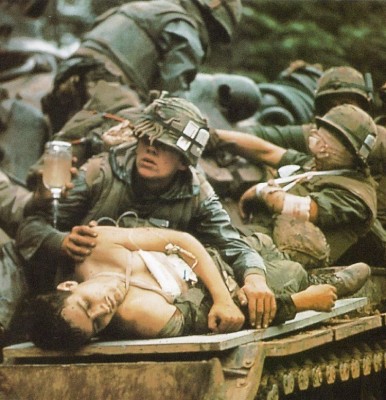
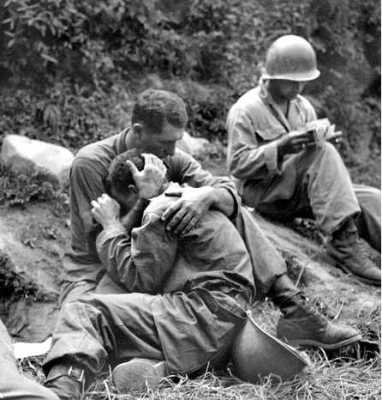
Historical
Documentation
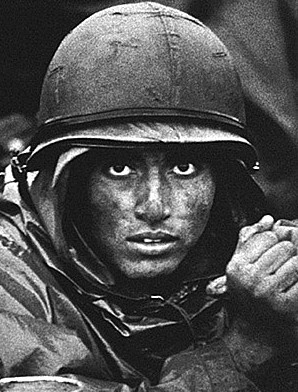
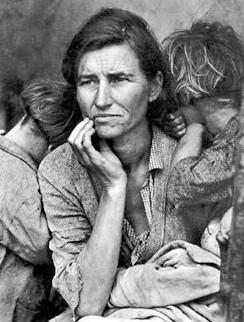
COMMUNICATIONS: THE TOOLS OF A MESSENGER
Cameron's career preparation began with training at New York Institute of Photography in Manhattan, New York where she acquired skill-sets as a professional photographer and film-documentary cinematographer. Her inspiration to engage in this work was sparked by the insights provided by three influential sources. This included the work of U.S. military photographer David Douglas Duncan in documentation of World War II, the Korean War, and the Vietnam War that revealed the complex aspects of war that encompass: Professionalism of the highest order, selflessness for others, building alliances, personal and collaborative struggles to achieve objectives, successes and failures, and the true horror of war. Secondly, the photographic exposes of Dorothea Lang's documentation illustrated the events and outcomes of the Dust Bowl in American history in the 1930s and sparked beneficial Presidential policy changes that were major in terms of their impact. Third, the extensive historical documentation of the the U.S. Civil War by Mathew Brady and his photographic colleagues -- that for the first time -- recorded that war was not a heroic nor idealistic endeavor but rather should serve as a conscious last choice for the purpose of establishing human rights and legal standards of conduct to be honored by the "United" States.
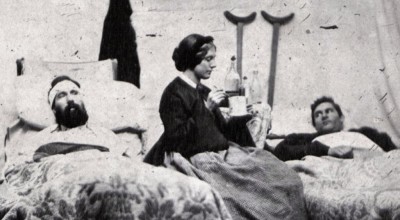

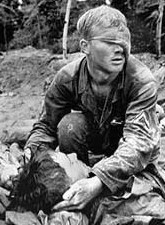

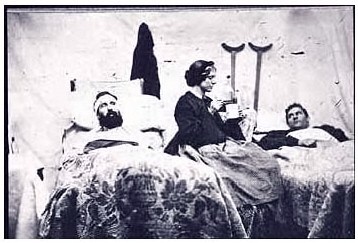
U.S. Army Soldier,
"Thousand-Yard Stare"
Vietnam by
David Douglas Duncan
U.S. Dustbowl by
Dorothia Lang for Presidential Policy
Review
U.S. Civil War Medical Care by Mathew Brady
In each of these efforts, these communication specialists illustrated the trials and triumphs, compassion and horror, and good and evil that dwells within each of us under the most extreme circumstances. Under the pressure of life and death choices, we are faced with our choice whether to offer the best version of ourselves or our worst. And amidst any of these events we humans have the capacity to change either positively or negatively in an instant. Based on recorded realities and history we are reminded (and can be inspired) to contribute our highest potential and invest our personal best into this world we live in as we find it. Such work does not rely on a mere snapshot of a moment, but rather records our history (the good, the beautiful, the bad, and the ugly) as our human species creates, encounters, and shapes it.
Neither a pessimist nor an optimist -- but rather as a realist -- Cameron reserves a place of respect in her heart and in her mind for the power of photographic and film documentary communications in how it can explore major issues, record realities, and contribute to developing new policies that can positively impact the world. Photographs and film documentaries acknowledge reality, history, and offer broader issues for thoughtful consideration. They also have the capability to provide training and education to expand human knowledge and expertise, internally communicate values and vision, and offer highly effective visual evidence useful for communicating briefings that facilitate Real-World analysis of events as they are evolving. In this way, Cameron's early training provided a vehicle to employ these tools as well as support our nation's vision and efforts. By such contributions, Cameron's intent focused on enhancing our collective understanding and knowledge. Such realism also has the capability to lead us toward reflections on both our successes while also learning from our our mistakes in a steady pursuit for advancement as an enlightened society.
WE